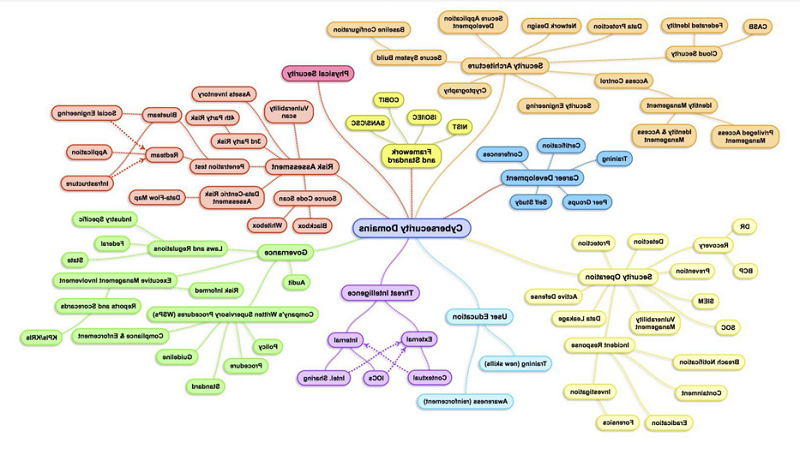Growing cybersecurity concerns, combined with regulation and compliance challenges, are a problem for enterprises of all sizes including mid-sized companies. In a climate where companies need to invest in core business processes to remain competitive, overcoming these security challenges adequately can be difficult.
Breaches involving large corporations might garner the most publicity, but they aren’t the only ones being targeted by cybercriminals. In fact, about 60% of cyberattack victims are SMEs. This is why it’s imperative for mid-sized companies to take these threats seriously and avoid any setbacks that could significantly impact their business plans.
Here are the biggest security challenges SMEs face and how they can potentially deal with them:
Lack of resources
As SMEs grow, their operational costs increase. With higher expenses and new processes for enabling continuous growth, cybersecurity is often the last thing on their mind. That’s where many SMEs make a catastrophic mistake. They think they’re safe from cyberattacks because there must be bigger fish in the sea. So, they limit their investment in cybersecurity, thinking of it as an unnecessary expense.
One solution is to take a risk-based approach to cybersecurity. Evaluate the biggest threats, assess your vulnerabilities and reserve resources for those threats, primarily. Now you can safeguard your mid-sized business in case of a breach as you would suffer a smaller financial loss if an incident ever takes place.
The expense of recovering from cyberattacks
Because of their limited resources to protect against and recover from various threats, a potential breach can bring a mid-sized organization down. Larger enterprises can recover much more quickly, but many SMEs may be forced to shutter permanently. That’s because recovering from a data breach can be incredibly expensive. To avoid disaster and stay in business, organizations need to prioritize hiring well-trained cybersecurity personnel and/or drawing upon external cybersecurity expertise. Seasoned professionals can help SMEs develop secure processes that won’t lead to devastating outcomes in case of a data breach.
Another solution is to get cybersecurity insurance because, sometimes, even the strongest security measures aren’t enough to prevent a breach. Cybercriminals use sophisticated tools and techniques and giving up is not in their nature. A breach might bring your company to its knees if you don’t have the right cybersecurity insurance.
Educating employees on security
Recent cybersecurity statistics show that an alarming 95% of cyberattacks are due to human error.This is the same for SMEs, too.
Employees are often the weakest link when it comes to cybersecurity. They can unknowingly let cybercriminals slip through the cracks and wreak havoc on a company’s system by simply clicking on a malicious link that seems legitimate. To prevent this, educating employees on security, protocols and processes is the most critical step SMEs should take. Regular cybersecurity awareness training will help employees manage passwords, identify and avoid phishing attacks and learn about many other threats and key security measures.
The best way to conduct this training is through presentations and drills. Drills can include DDoS attacks, adding unauthorized devices, phishing emails, internal and external network scanning, tabletop exercises and more.
As for presentations, mind-mapping might be your best option. A mind map is a diagram for organizing information visually for easier understanding and better knowledge retention. It has a main topic, from which related subtopics stem to help organize ideas.
Here’s an example of a mind map:

Source: Henry Jiang
Learn how to mind-map like a pro to help your teams gain a better understanding of key cybersecurity threats, protocols and solutions.
Dealing with large amounts of data
Today’s enterprises rely upon data to make informed business decisions. But the more data they work with, the bigger the risk of losing it. Apart from malware and data theft, they could lose sensitive business information due to software corruption, hardware issues or human error.
Companies need to back up their data and store it securely to avoid major setbacks. In-house data backups aren’t entirely safe from potential intruders and other issues that could lead to data loss. That’s where cloud storage comes in. Cloud storage has become an increasingly embraced method of data protection. By keeping data backups on remote servers, you’ll have it stored in case of data loss or theft.
Cloud computing is also vital if you have remote workers as they can access the business network and necessary files from any location.
The need for strategy
Creating an effective cybersecurity strategy is an important part of your business planning process. Without it, all the plans you have for your organization might go to waste. Like their larger counterparts, mid-sized companies lose a lot of money annually due to cybersecurity incidents, but they might not have the same financial resilience to get back on track.
In 2019 alone, companies worldwide averaged a staggering loss of US$4.7 million due to cyberattacks. The question is, can your business handle that kind of loss? For many mid-sized businesses, the answer is no.
About the author: Silvana Carpineanu is an enthusiastic Marketing Specialist who works for mindomo.com. Driven by passion and creativity, she's responsible for copywriting, advertising, SEO, and content creation. She does all of this knowing that for every minute spent organizing, an hour is earned.
